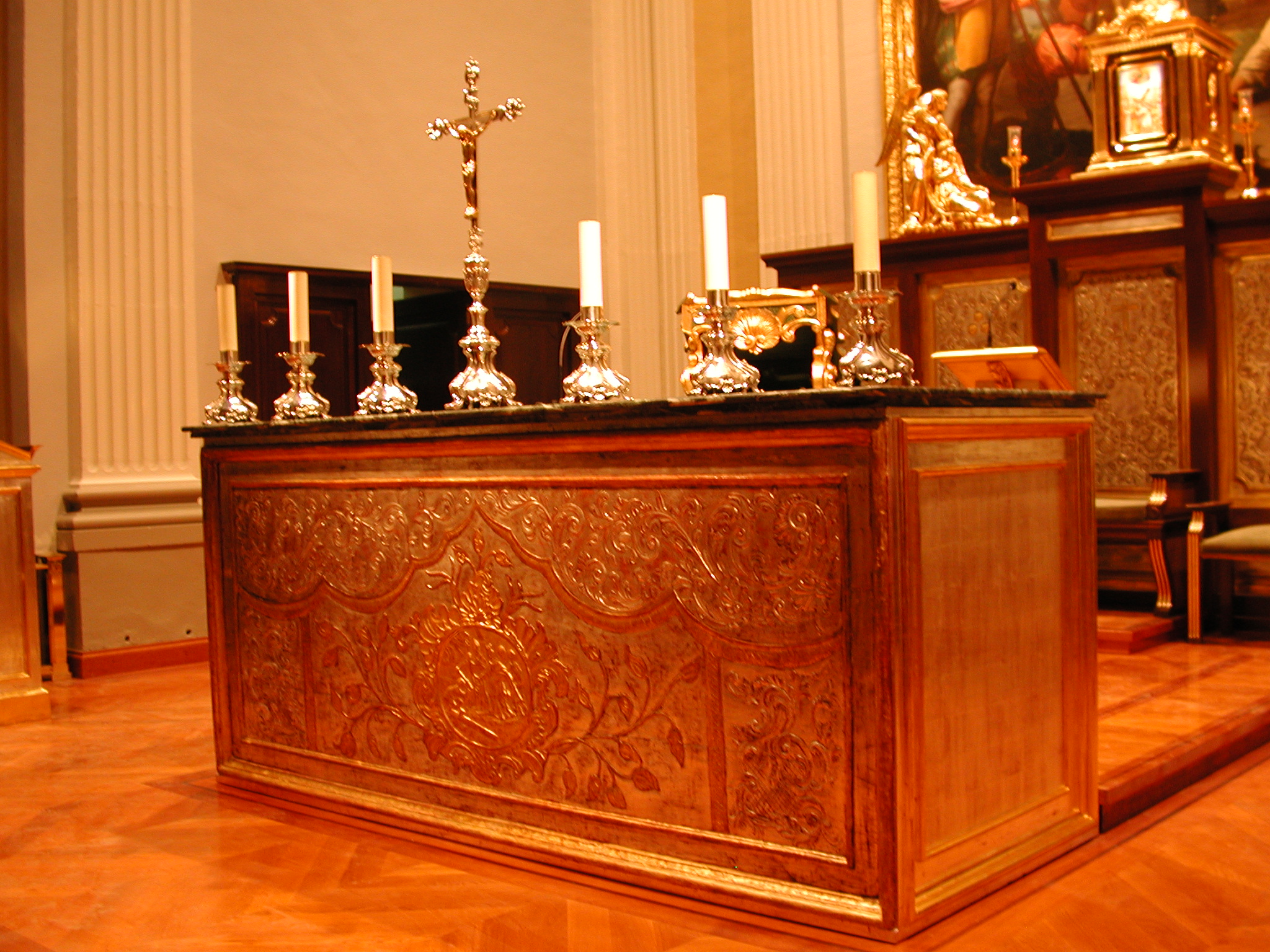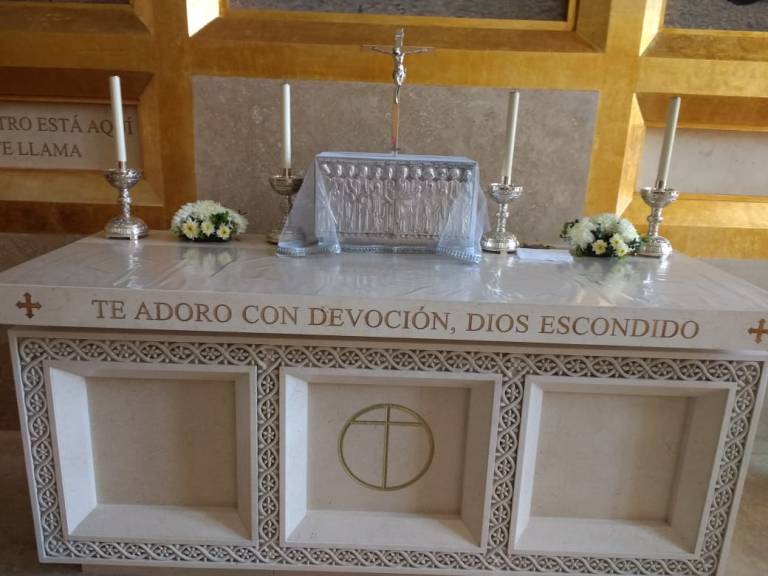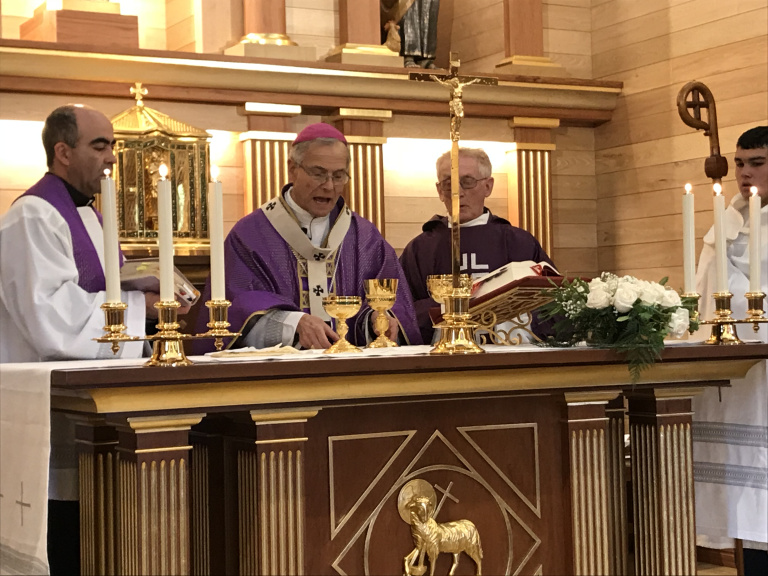The liturgical elements are the signs and symbols associated with the places where the sacraments of the Catholic Church can be imparted. Thus, the seven liturgical elements are: baptismal font, seat of the celebrant and ministers, ambo, altar, tabernacle -also known as tabernacle- place of the choir and confessional.

THE ALTAR, SYMBOL OF CHRIST AS A CORNERSTONE
The Altar is one of the most important and significant elements of the Christian liturgy. It is the symbol of Christ as the CornerstoneFor this reason, the priest kisses it at the beginning of each celebration.
The characteristics The essential elements that every Christian altar should have are:
1. To be and to appear as a table.
2. Be separated from the wall so that you can face the people.
3. To constitute the center of attention of the entire assembly.
4. To be unique, dedicated to God alone.
5. Not to have images or relics on its surface.

In addition, it is recommended that the altar be completely made of stone and immovable.
THE ALTAR IN THE TIME OF THE PATRIARCHS
In the Old TestamentThe altar was a monument or stone on which sacrifices were offered. The patriarchs erected altars in the places where God manifested Himself to them.to commemorate favors received (Gen 12:7-8; 13:18; 26:25; 33:20; 35:1-7), although the Scriptures do not speak of the material or form of such altars.
The first mention is found in Gen 8:20 when Noah, after the flood, built an altar and offered burnt offerings. Abraham also built one when he was going to sacrifice his son Isaac (Gen 22:9).
In the New Testament, the first Christian altar was the table at which the Lord instituted Mass during the Last Supper. In the Lateran Basilica in Rome, relics are preserved that are believed to belong to that altar-table.
THE ALTAR TODAY
In the past, masses were held with the people's backs to the church.. An instruction issued by the Second Vatican Council on September 26, 1964, established several changes in the altar, mainly that of its free placement, so that
the priest could preside the Mass facing the community.
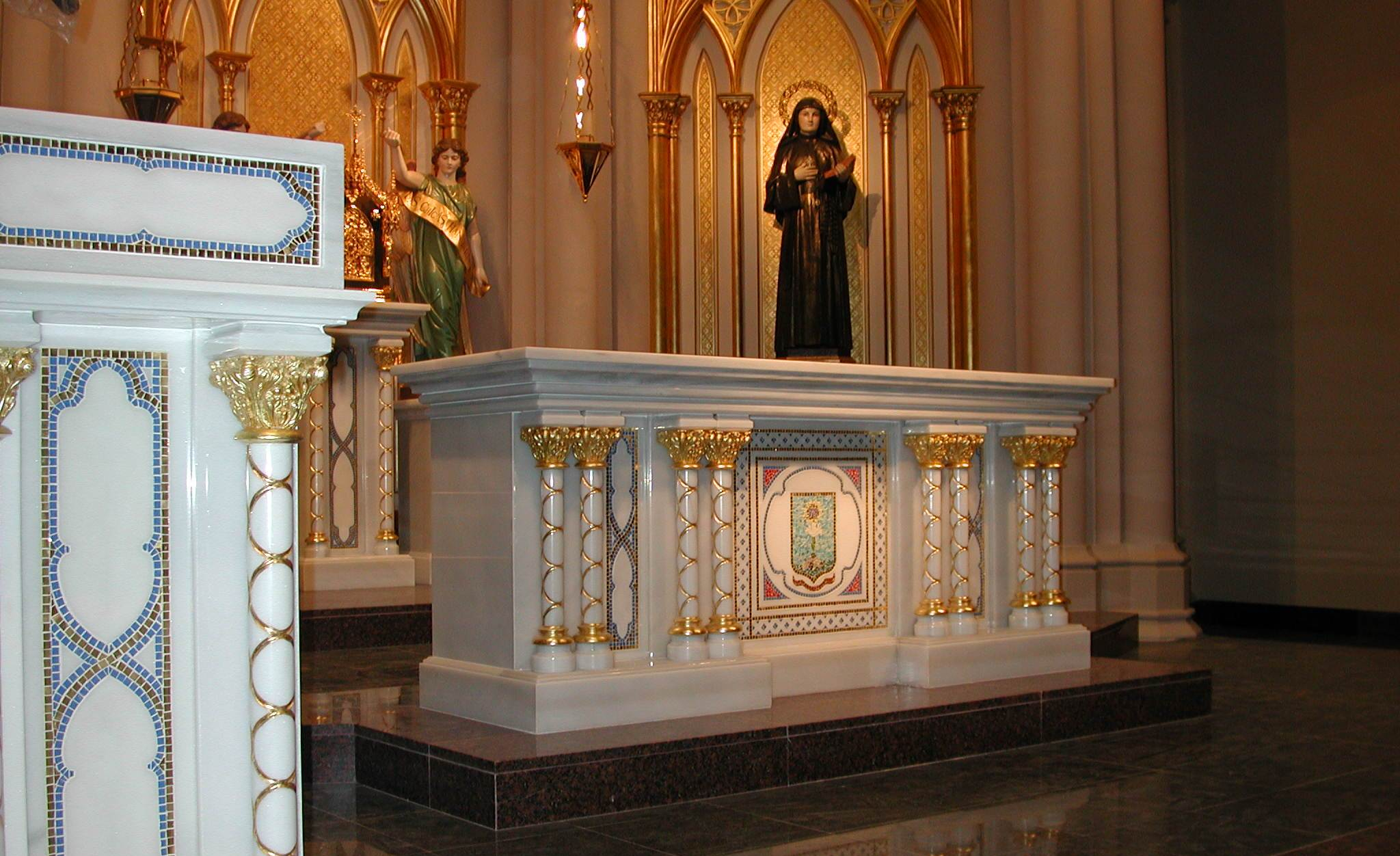
Altar clothsIn ancient times there were three linen cloths that covered the altar where the Holy Mass was celebrated; the top one reached the floor on both sides. Symbolically they represented the shroud in which the body of the Lord was wrapped.
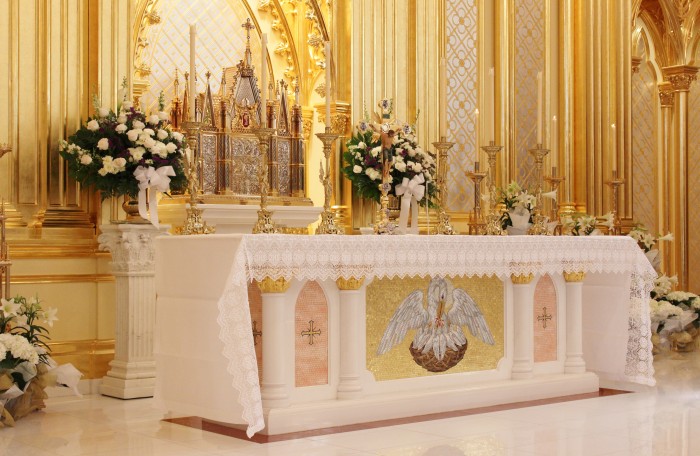
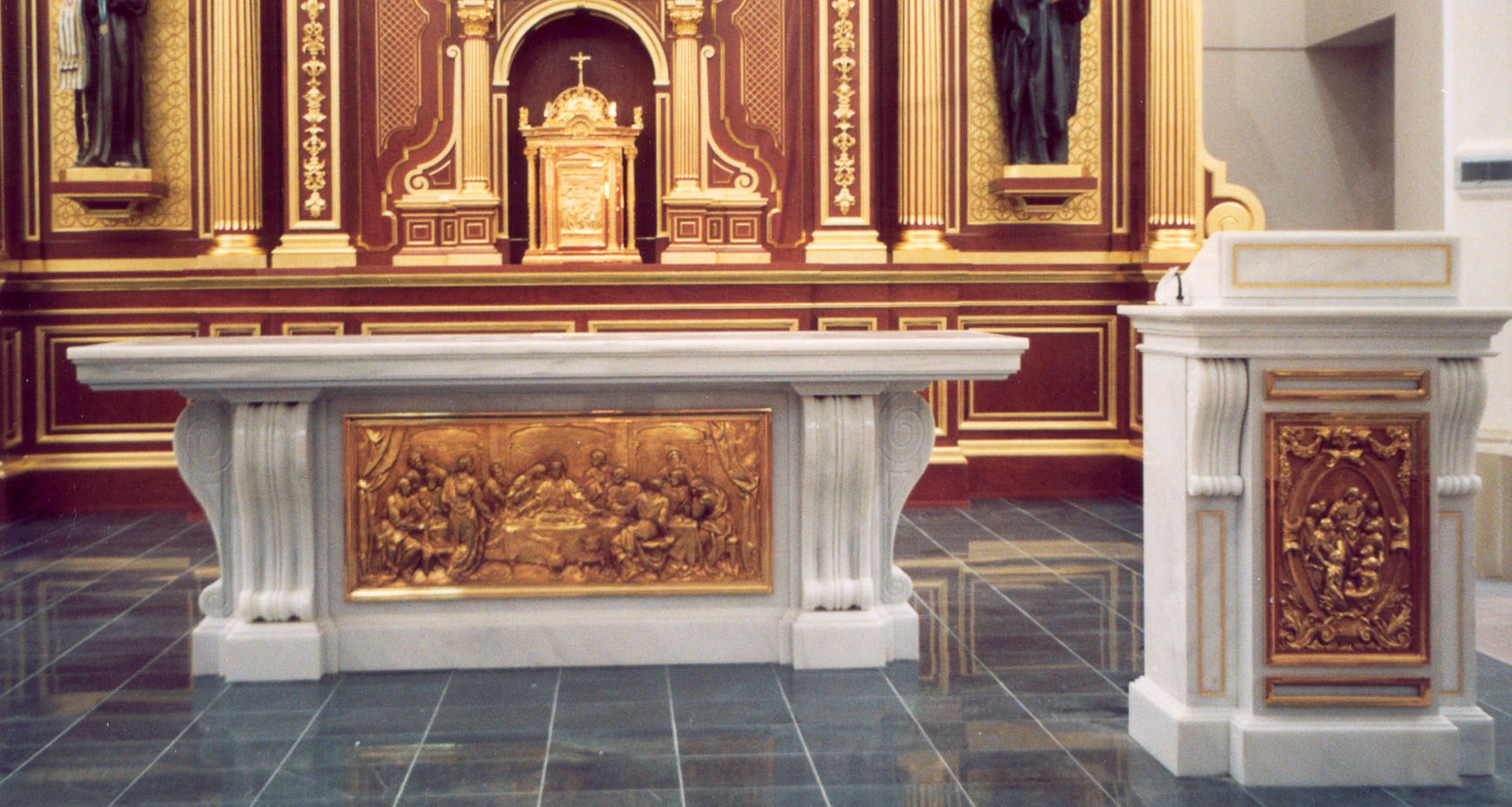
Currently, the Roman Missal states that "at least one altar cloth is to be placed on the altar out of reverence for the celebration of the Memorial of the Lord and the banquet at which the Body and Blood of Christ is distributed" (OGMR 268).
The dismantling of the altaris a sign commemorating the stripping of Jesus' garments on Calvary. The Maundy Thursday after Mass. The priest removes everything from the altar except the candles and the crucifix.
Under the altar since the first centuries, relics of saints are placed as an expression of the "communion of saints".
Here are some of the altars made in our workshops, which can be found all over the world and on which the Holy Mass is celebrated today.
